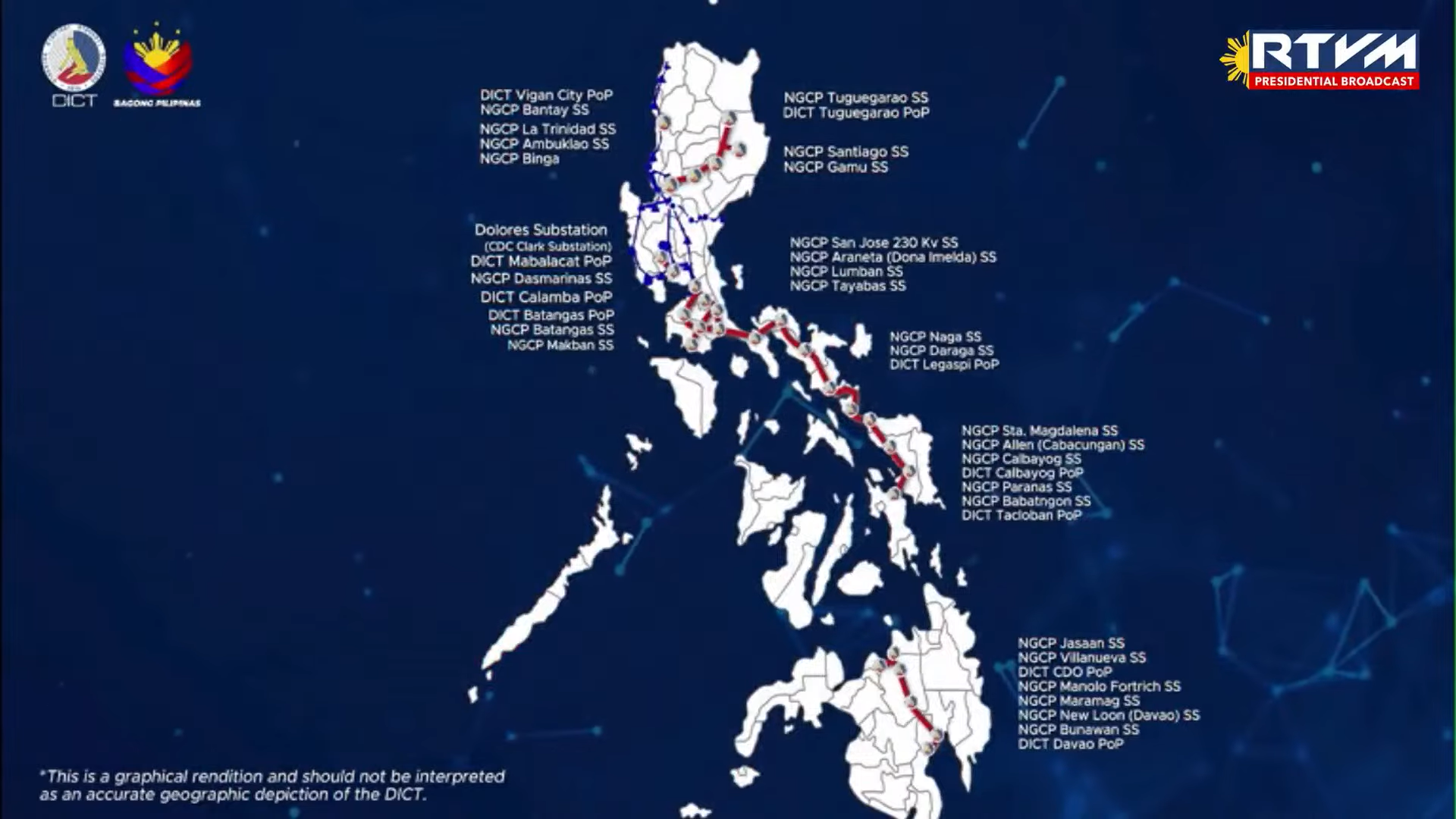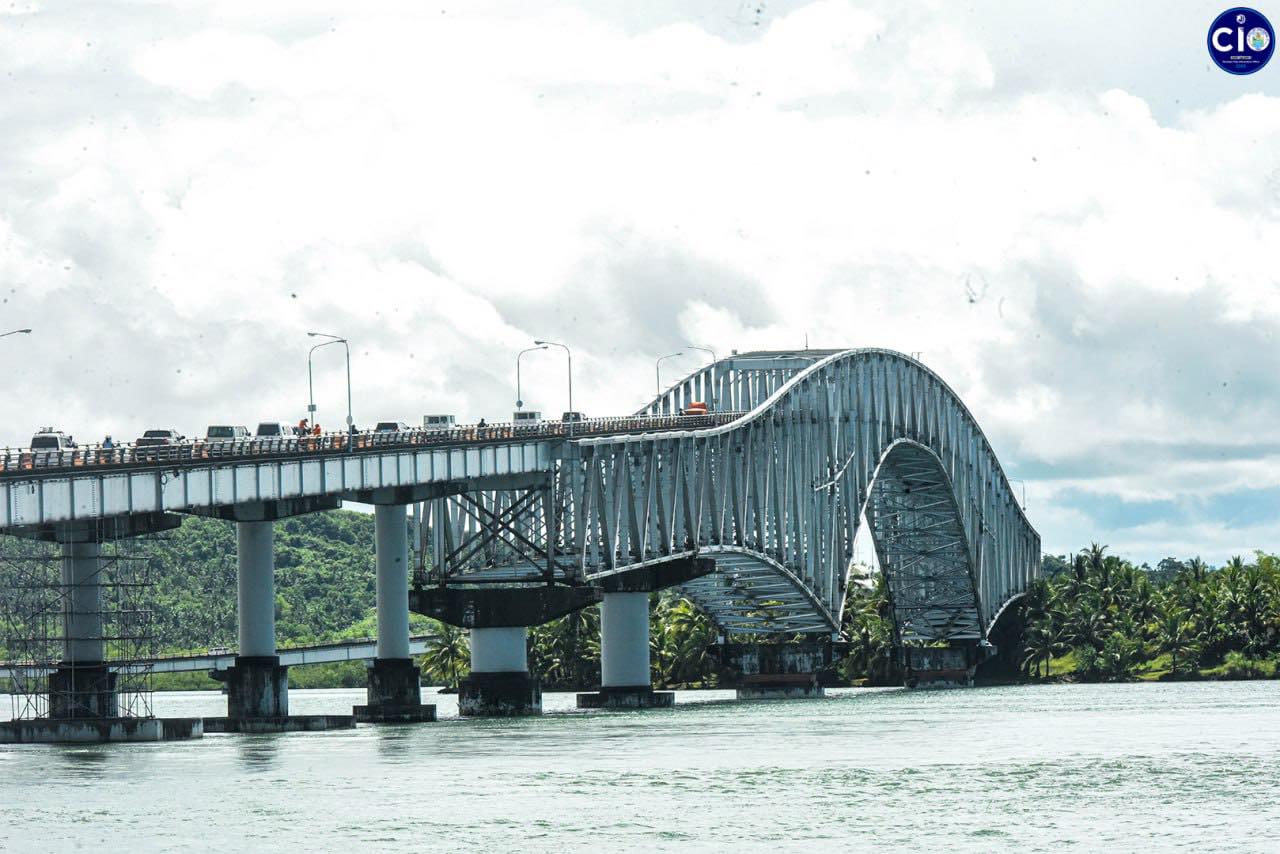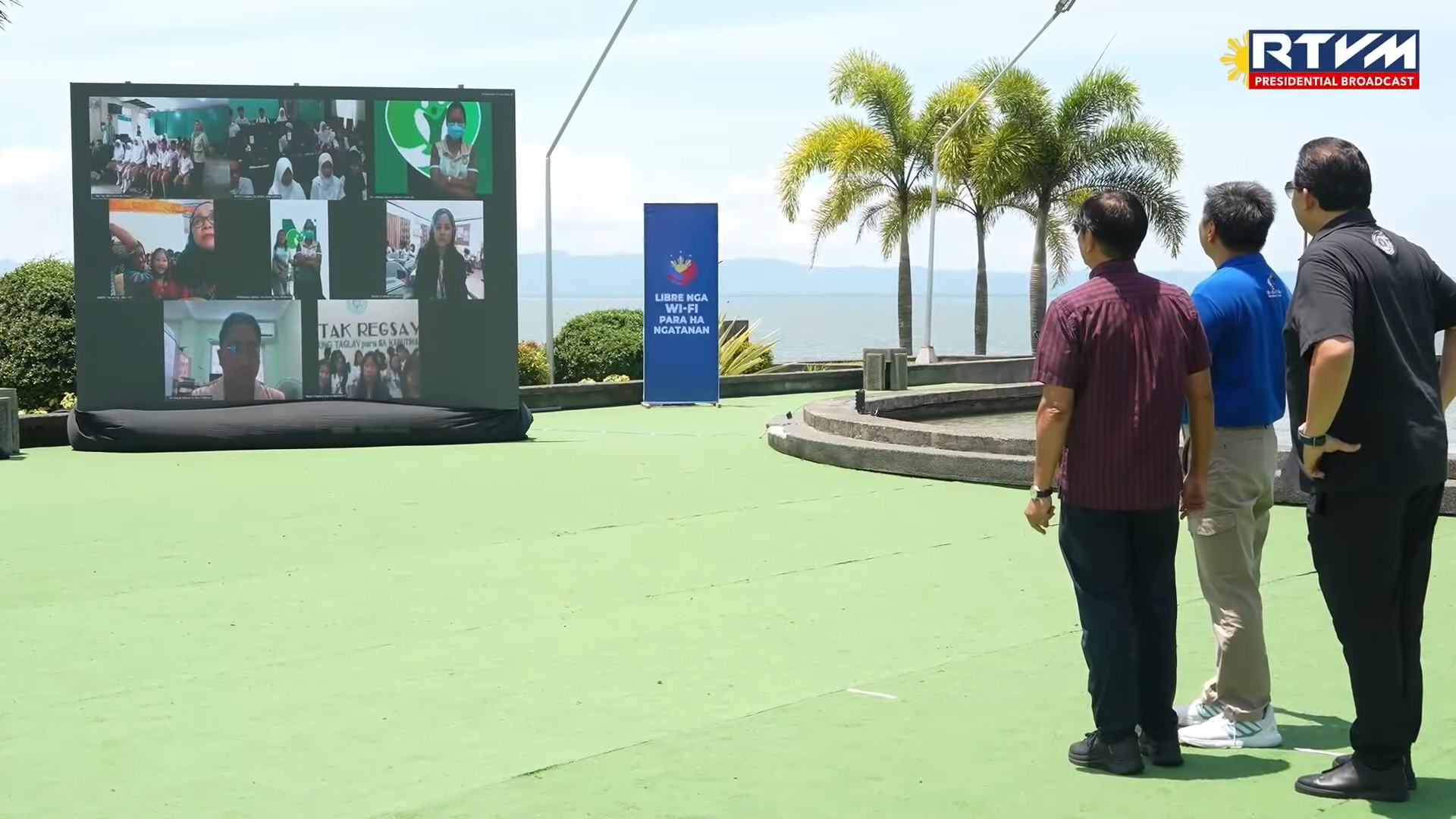
By Dean Aubrey Caratiquet
Together with Department of Information and Communications Technology (DICT) Secretary Henry Aguda and Leyte 1st District Representative Martin Romualdez, President Ferdinand R. Marcos Jr. led the grand launch of National Fiber Backbone (NFB) Phases 2 and 3 in Palo, Leyte, this Monday, July 7, which builds upon the foundations of the NFB Phase 1, which launched in 2024.
“Noong nakaraang taon, inilunsad natin ang Phase 1. Sinimulan sa Ilocos Norte hanggang Quezon City—mahigit isang libong kilometro ng high-speed fiber [optic cables] ang inilagay at inilatag,” the President explained in his speech at the event.
Phase 1 consists of a 1,245 kilometer government-owned fiber backbone with 28 nodes that brought high-speed internet access to at least 14 provinces in Northern and Central Luzon, two National Government Data Centers, and four Bases Conversion and Development Authority (BCDA) ecozones.
Phases 2 and 3 extend the NFB by adding 1,781 kilometers of fiber optic cables in Regions II (Cagayan Valley), IV-A (CALABARZON), V (Bicol), VIII (Eastern Visayas), X (Northern Mindanao), and XI (Davao).
President Marcos said the completion of Phases 2 and 3 would empower 600 national and local government offices connected to the GovNet, as well as provide fast, reliable, and affordable internet access to 17 million Filipinos.

The Chief Executive went on to enumerate the benefits brought about by NFB Phases 2 and 3 to citizens in Visayas and Mindanao, especially those who are living in geographically isolated and disadvantaged areas (GIDAs).
“Mas maaga ninyong malalaman kung may bagyong paparating o kung may job opening sa iba’t ibang bayan. Mas madali ninyong makakausap ang inyong mga mahal sa buhay—saan mang dako ng bansa o mundo, anumang oras,” President Marcos emphasized.
“Sa [pamamagitan] nito, makakahanap kayo ng mga online buyer para sa inyong paninda. Makakapanood din kayo ng mga online tutorial kung paano magluto, magnegosyo, [at] paano magtanim. Dahil din sa mas maayos na koneksyon, maaari ng makasabay ang bawat Pilipino sa balita sa buong mundo,” the President added.
After concluding his speech, the Chief Executive pressed the digital button of the test equipment, officially activating the NFB Phases 2 and 3.
“Alam ko, marami pa tayong kailangan ayusin. Pero hindi na rin tayo babalik sa nakaraan. Kaya dapat mas pabilisin pa; mas palawakin pa; mas gawing abot-kamay ang teknolohiya para sa lahat ng bawat isang Pilipino,” President Marcos reaffirmed his administration’s commitment towards a digitally-connected Philippines.

On San Juanico Bridge matters
Meanwhile, President Marcos acknowledged the mounting inconvenience caused by transportation bottlenecks that continue to affect Samar and Leyte in Eastern Visayas due to the 3-ton load limit imposed on the San Juanico Bridge due to its deteriorating condition.
Halfway through his speech at the launch of NFB Phases 2 and 3, he ordered the expedited retrofitting and complete restoration of the vital infrastructure to alleviate the burden caused by its limited load-bearing capacity on residents, businesses, and travelers in the region.
“Pero habang pinapalawak natin ang koneksyon sa bansa gamit ang mga fiber optic cables, huwag nating kalimutan ang koneksyon sa lupa. Alam ko pong ramdam ninyo ang abala rito sa Leyte dahil sa kalagayan ng San Juanico Bridge. Mahaba ang pila, mabagal ang biyahe. Maraming naaabala,” the President acknowledged the gravity of the transportation crisis in Eastern Visayas.
Based on recent reports submitted to the President by the Philippine Coast Guard (PCG), transport of essential goods has significantly improved, wherein perishable cargo now typically waits just one to two hours, while non-perishable goods experience delays of about two to four hours.
This waiting time is far better than the first time he visited the bridge, where drivers had to wait for four days to cross the bridge, according to the President.
However, he emphasized the necessity of fast-tracking the repairs that are being done to the 52-year-old architectural icon, noting that the repercussions of the bridge’s significantly reduced commercial traffic have also been felt in Mindanao.
“Kailangan pa nating itaas ang buong kapasidad nito sa tatlumpu’t tatlong (33) metric tons. Paaabutin natin doon sa kanyang dating [load capacity],” the President addressed mounting public frustration over the national impact of the 2.1 kilometer long bridge that links the islands of Samar and Leyte.
“Inatasan ko na ang Department of Public Works and Highways (DPWH) at Department of Budget and Management (DBM) na hanapan agad ito ng solusyon. Agaran tayong kumilos, at patuloy na kikilos upang muling maging ligtas at matibay ang ating San Juanico Bridge,” the President declared.
President Marcos said that more than P500 million has already been allocated to restore the bridge’s load limit to 12–15 metric tons by December 2025, which is expected to alleviate the current traffic and logistical delays.

PBBM leads launch of a free public Wi-Fi site
In a separate event at the same locale, the President led the launch of a free public Wi-Fi site at the MacArthur Landing Memorial National Park; an initiative that encompasses the Marcos Jr. administration’s National Broadband Plan (NBP) and the Free Wi-Fi for all Program spearheaded by the DICT.
At the park, the Chief Executive conducted a live speed test using a tablet to measure the site’s bandwidth before engaging in a virtual interaction with selected free Wi-Fi beneficiaries from remote areas in Luzon, Visayas, and Mindanao.
“Gamitin ninyo nang mabuti ‘yong internet natin, connected na tayo sa buong mundo. Hindi lamang sa Pilipinas, kundi sa buong mundo. Good luck sa inyong lahat; boys and girls, mga teachers, maraming salamat po,” President Marcos told the online participants.
He also remarked that the establishment of the NFB would provide avenues for equalizing growth and development across the archipelago, using technology to bridge the digital divide and facilitate inclusive economic growth.
More than just a tool for entertainment, internet connectivity is now recognized as a vital component of inclusive national development. Through the expansion of free Wi-Fi sites across the country, the program is set to benefit over 9.8 million users in 1,401 cities and municipalities, including 3,040 GIDAs.
The NFB aims to provide faster and reliable internet connectivity, with around 70 million Filipinos expected to benefit from it. The project’s completion is also likely to spur growth in rural areas, with internet penetration seen to increase to 65 percent from the current 33 percent. Furthermore, it aims to lower the price of the internet to as much as USD5 per Mbps (megabit per second).
av
